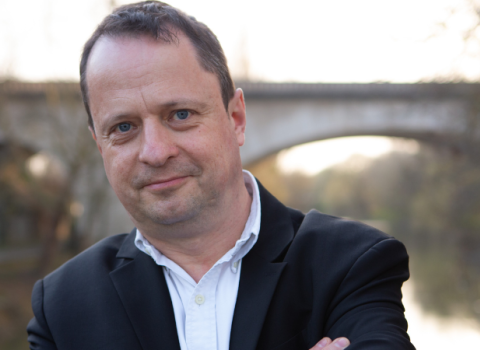European Digital Infrastructure Consortia will help countries to pool resources and implement joint research projects in areas from blockchain to genomics

The EU is encouraging member states to band together to install shared digital infrastructures, with the creation of a new legal framework, European Digital Infrastructure Consortia (EDIC).
Based on the existing European Research Infrastructure Consortia (ERIC), EDICs are designed to underpin the implementation of multi-country projects that no single member state could manage on its own.
That will promote efforts to meet the EU’s Digital Decade 2030 targets, of training a digitally skilled population with highly skilled digital professionals; installing secure, efficient and sustainable digital infrastructures; the digital transformation of companies; and digitisation of public services.
Unlike ERICs, the focus of EDICs is on deployment rather than research, and the implementation structure is more open-ended, a Commission official told Science|Business. EDICs are also less open to third countries.
Most EDICs will initially be limited to public entities, but the structure does allow for private companies to participate.
At least three member states must apply to set up an EDIC. Members define the governance and rules, and member states which are not members have a guaranteed observer status.
As well as coordinating funding, the intention is to promote common standards and interoperability.
Following an initial call for expression of interest in setting up EDICs between December 2022 and February 2023, eight member states, led by Belgium, applied to set up a common blockchain infrastructure, called Europeum.
This would allow driving licences and other documents to be recognised across the bloc, as well as potentially supporting other applications such as the digital euro, Belgium’s secretary of state for digitisation, Mathieu Michel, recently told Science|Business.
EDIC budgets are based on members’ contributions, but may also draw from other sources, including EU and national grants. EU funding sources could include the Digital Europe Programme and the Recovery and Resilience Facility.
Member states have so far committed €1 million to the blockchain project, but Michel is hoping to secure additional funding from the Commission.
Applications for the following projects are also being prepared:
- Network Local Digital Twins
- Alliance for Language Technologies
- Cybersecurity Skills Academy
- Mobility and Logistics Data
- 1+ Million Genomes
- Copyright Infrastructure
- Innovative and Connected Public Administration
The Alliance for Language Technologies, is supported by 15 member states, with five more in an observer capacity. Coordinated by France, the aim is to develop a large multi-language model (LLM) that will address the shortage of data training in European languages.
The Local Digital Twins EDIC, led by Estonia and supported by Germany, Slovenia, Czech Republic and Spain, aims to build smart and sustainable cities.
The 1+ Million Genomes initiative aims to enable access to genomics and related clinical data across Europe, including for research and policy. The proposed EDIC would support its implementation.
“An EDIC can provide a framework to channel skills and training investments faster, in a more structured manner, and in a cost-effective way,” said a spokesman for DigitalEurope, an industry association which is supporting the creation of the cybersecurity skills EDIC.
“If we pool resources, we are able to specialise in certain areas in certain countries, leverage capabilities of one member state in another, and make sure skills and training investments can be more impactful on the ground.”
So far, policies on training and skills have mostly remained national, whereas an EDIC could unlock the benefits of cooperation. In this sense, it is less about the specific structure of an EDIC, and more about the collaboration it represents. The talks could still decide on a different direction.
“We’re happy if it’s an EDIC or another vehicle, as long as it meets the target of creating a public-private partnership to upskill Europe’s workforce in cybersecurity,” the spokesman said. Industry involvement is crucial, even though there are no strict formal requirements to involve industry in an EDIC’s governance.
EDICs can be used to establish new infrastructures, or to operate existing ones if the change of status brings added value such as sustainability over time.
In addition to the seven applications being prepared, “We have a structured discussion based on an established working group with member states on five more EDIC proposals,” the Commission official said.




